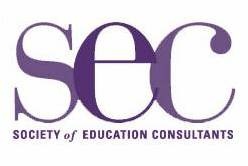
Even before COVID 19 some schools had already seen a paradox starting to form on two fronts.
Firstly, with the rise of terms such as Cultural Capital, Global Citizenship and Cosmopolitan Capital, parents have become more aware of the need to choose a school that will develop particular attributes in their children for them to have a successful future. At the same time they have shown signs of becoming worried over their perceived loss of heritage which is possibly why we are witnessing the rise of nationalism in the West.
Secondly, PISA, the organisation that ranks the education systems of different countries by comparing the results of students has launched a new Cultural Competence assessment in 2018. The assessment “is composed of two parts: a cognitive assessment and a background questionnaire.
The cognitive assessment is designed to elicit students’ capacities to critically examine global issues; recognise outside influences on perspectives and world views; understand how to communicate with others in intercultural contexts; identify and compare different courses of action to address global and intercultural issues.”
Many of the best schools rose to this challenge by utilising strategies from cultural competence theorists to align the interests of different stakeholders and create their vision of 21st Century education. Being sensitive to the needs of all the members of any community is a difficult task and, if your school is using an international curriculum, then it may face more challenges to fit the requirements of the host nation.
Education as a socialising agent has always been a concern for any government to create a cohesive society. So educators must understand the importance of education in both the local and global context they are teaching in. It’s often seen as best practice to inform newly hired teachers about the cultural or political taboos of the society they are working in.
Aligning the mission to everyday activities
Most schools that have written mission statements aligned to creating 21st Century Global citizens have looked at the relationship between the values that are evident in their school community and the characteristics that they want their students to embody. This involved developing a strategy to resolve numerous philosophical, social and cultural differences which is then articulated in their policies. The approach is realistic in that it is necessary to take into account their Cultural setting and the resources they have to utilize.
Each aspect of the strategy has a process that creates an inclusive atmosphere where the student is not just seen in academic terms, rather the whole person is cultivated to have confidence in their abilities to succeed in both social and professional contexts and be perceptive of the environment they are in. A key aspect of success is having teachers that value diversity and inclusion, which is also reflected in the staff recruited.
Creating the Teaching Culture
As the students we serve become increasingly diverse in many ways (race, culture, language, class, religion, sexuality, and more), educators are recognizing the need to increase their cultural competency in order to better support students and meet the complex demands of of these societal and curricular challenges.
Acquiring the vocabulary, knowledge, and skills to define abstract sociocultural issues will benefit teachers in both their private and professional lives by improving their understanding of the complex situations that children face every day in school (due to their many social group identities), enhancing their ability to view situations from multiple viewpoints, and enriching the curriculum.
These insights will help to create a school environment committed to equity and place children in circumstances where their status (Personal Cultural Capital) is respected rather than devalued. “The 10 C’s Model of Awareness and Change” (© 2002 by Patti DeRosa MSW/MA and Dr Ulric Johnson) is one tool that can support the development of our socio-cultural awareness.

Developing Teachers – utilising the current skill set
Addressing the philosophical differences between staff is vitally important in setting the right atmosphere. This includes developing relational trust between staff and recognising that staff will undoubtedly be trained in different era’s where their training may have placed emphasis on different elements of an educators role. And it’s the responsibility of the Leadership team to ensure that staff are given necessary training for their professional development.
Ensuring that all staff are aware of the necessity to establish consistency in their approach to all children can be aided by reviewing studies, such as the Rosenthal effect, to ensure that everyone sets high expectations for students. And reviewing the work around restricted codes to ensure that students are not misunderstood on the basis of their vocabulary. For example paying attention to what the student says as opposed to how students speak, when answering questions.
Providing teachers with access to a counsellor alongside hosting wellbeing initiatives lends helps develop the culture of support. Equally it is becoming a common theme that schools are investing in building their staffs’ emotional intelligence whilst using a variation of instructional rounds to identify the unique strategies for successfully teaching their unique student body.
Cultural competence embedded in the curriculum
Identifying the hidden curriculum present in a school, and addressing any issues surrounding it often represent a conundrum for schools. The dilemma posed by (the ramifications of ) Cultural Capital has created powerful discussions about what is included and excluded in a variety of subject areas. This has seen schools create study groups to investigate what this means in terms of their own setting. This further analysis of the role, attitudes, and behaviours of staff contributes to the school climate can then lead into the staff identifying not only what is working well but how to continue to embed global perspectives within the environment.
A key element in the pedagogy of such schools is to utilise critical thinking skills. Enriching lessons with an analysis of current news articles related to the discipline areas also ensures the relevance of the topic to everyday lives (this is expanding on the idea of the teachable moment), often with current, or historical events to view them from the perspectives of different nations. While becoming familiar with these methods they can develop core competencies in understanding multiple perspectives, empathy and problem-solving. This is used in every subject area to develop the students’ awareness.
Acknoweldging the different cultural and gender influences across the different facets of life can be easily facilitated by the use of timelines. These can be used to promote discussions around cultural dissonance and conflicting truths.
Implementing a social and emotional curriculum which identifies and tackles the issues around managing social interactions on social media and exploring the concepts around Ditgital Citizenship is one of the distinguishing factors for creating a progressive environment that embraces the modern worlds. Often due to time constraints many schools decide to use a school counsellor or teacher to led assemblies times to cover these important aspects of childhood and adult life.
Alienation and rejection
It is not uncommon during times where international tensions have risen that particular groups or individuals may become alienated. The development of hostilities between groups in one country can be quickly copied in other countries. The frustration of not being accepted, regardless of which end of the social scale a student is on, is a scenario which can lead to the development of negative coping behaviours.
A key part of Cultural Competence is being able to comprehend the environment you are in and interact with others effectively. This is particularly important during times of political and social upheaval or in the midst of international conflicts when friendships can dramatically change. The support of a counsellor or trained mentor can help alleviate the stress of these situations.
The resilience of these children can be supported; by helping them develop an understanding of how the wider influences in society affect them. Having a vocabulary to articulate complex cultural issues raises our understanding and ability to manage different situations. Ideally, these students can begin to develop healthy strategies to process these influences in positive ways. A large portion of work by Cultural Engagement specialist Paul Eme is specifically designed to help professionals working in culturally and emotionally challenging situations.
Wider reading and the relevance of Anthropology
It is important to note that there a wide range of terms and subject areas that relate to cultural competence (bicultural competence, global competence, cultural sensitivity, etc) they may vary in the degree to which they cover certain aspects of knowledge. The spectrum ranges from those areas that are specifically designed for International Business and corporate multiculturalism to those that seek to create social and economic cohesion whilst resolving tensions and conflicts.
The field of Anthropology is often used as the primary source of information for areas of knowledge around culture. For example, the field of Intercultural communication was originally borne out of the work of Anthropologists and linguists, most Notably, Edward T.Hall and his colleagues at the Foreign Service Institute in the USA.
The work of Anthropologists and other professions help us understand how different cultures are shaped; societies function and identify the modern and historical forces that shape them. At the level of the individual, it provides research into the reasons why concepts such as agency have different interpretations. The perspectives of different disciplines are often overlooked when critically examining issues but their use supports the development of a holistic view and can provide a deeper analysis of these issues by encompassing multiple explanations.
Conclusion
At the heart of Cultural Competence is the ability to interact with people from other cultures. The development of a skill such as being able to understand multiple perspectives helps facilitate this. There are often constraints that have to be acknowledged when trying to achieve these aims.
Each school has distinctive circumstances which they have to navigate, in most cases the curriculums are already set and there is little space for any innovation. It is a common occurance that schools will use a consultant to help them with their indivdual scenario.The ideas laid out in this article are suitable for an array of curriculum models and can be seen as an overlay of minor steps that can be taken to infuse the culture of a school with a number of global and cultural competencies. Schools on either end of the social scale have been known to use variations of these ideas.
Conversely Teachers will have certain parameters that they can work within. The conundrum of using the teachable moment versus sticking to the daily lesson plan doesn’t allow much room for manouvere. Many teachers will find that they are having to learn many things on the job that they havent had any guidance in before. The work of the theorists mentioned can be found on the internet, their work is largely generated from their own challenging personal and professional experiences which can be a source of comfort for teachers who are feeling overwhelmed.

Mark McAuley is a Director at the Society of Education Consultants (SEC) in England. He has worked internationally for many years and has delievered talks around overcoming alienation and rejection. He is currently developing resources for critical awareness including an online cultural competence courses for parents, educators and children.
For more information Please email: culturalcompetenceSEC@gmail.com
Useful links and resources:
International Affairs office US Dept of Education Global and Cultural Competency
Global Competence PISA OECD:
http://www.oecd.org/pisa/pisa-2018-global-competence.htm
Global Competence Matrix download
Rosenthal Effect
https://www.statisticshowto.com/pygmalion-effect-rosenthal/
Basil Bernstein – Speech Codes
http://www.ibe.unesco.org/sites/default/files/bernsteine.pdf
Convention on the Protection and Promotion of the Diversity of Cultural Expressions
http://portal.unesco.org/en/ev.phpURL_ID=31038&URL_DO=DO_TOPIC&URL_SECTION=201.html
Change work consulting
The 10 C’s Model of Awareness and Change” © 2002 by Patti DeRosa MSW/MA and Dr Ulric Johnson – Currently being updated
https://changeworksconsulting.org/The%2010%20Cs-2002.pdf
Paul Eme
Sky One Documentary Football Behind Bars’
https://www.youtube.com/watch?v=e7YOz4g-MlM
Register for free
No Credit Card required
- Register for free
- Free TeachingTimes Report every month